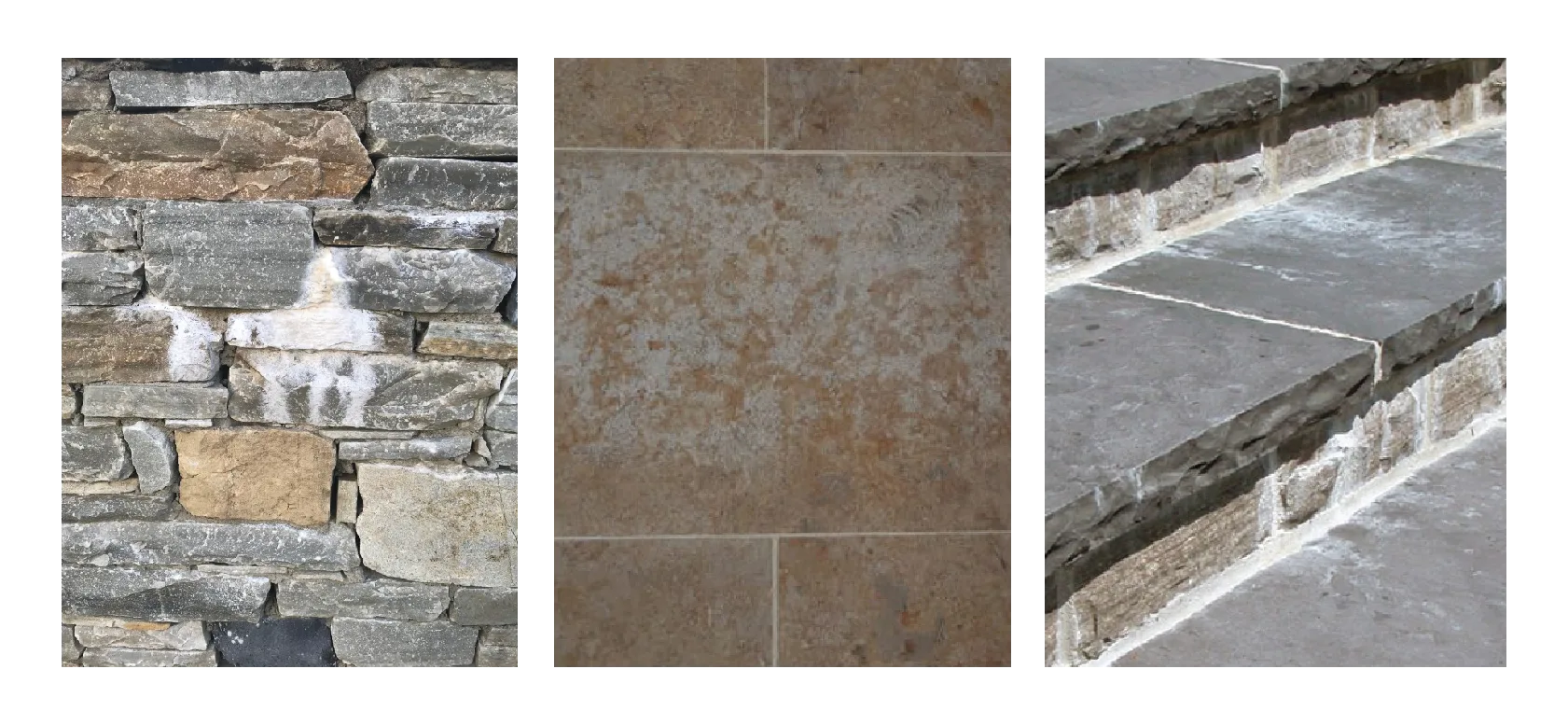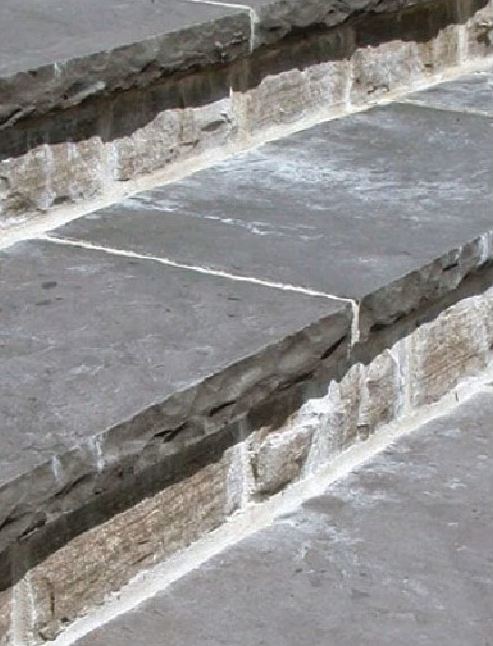Moisture within the wall
Alkali Staining
Alkali stain is a common issue in limestone, appearing as discoloration ranging from light golden to dark brown. This stain is caused by alkali-charged moisture seeping into the limestone from its bottom or back bed, often originating from nearby concrete floors, walls, or ground.
Moisture sources include rainwater, concrete wash, excess mortar moisture, or ground moisture. As the moisture travels through the stone, it collects alkali and dissolves small organic particles. When the moisture reaches the stone’s surface and evaporates, it leaves behind the alkali and organic matter, resulting in a visible stain. However, leave it, and it will go away as the stone dries and the alkali naturally dissipates.
Efflorescence
Alkali stain and efflorescence share similar mechanics but differ in chemistry. Moisture in the wall absorbs minerals like potassium, iron, calcium, magnesium, sodium, and sulfates, which settle as a powder or white bloom on or beneath the stone’s surface. This deposit is usually easier to remove due to its higher solubility in water compared to alkali stains. Efflorescence can cause damage when crystal growth occurs beneath the stone’s surface, leading to exfoliation or flaking. To prevent these issues, it’s important to keep dirt and stone separate and use waterproofing treatments to protect against groundwater or construction moisture. The key advice for all masonry is to “KEEP THE WALLS DRY.”

Prevention
Dampproofing
Damp proofing is an essential step in construction, especially when working with Indiana limestone, to prevent moisture-related aesthetic and structural issues. While Indiana limestone itself is naturally resistant to water, prolonged exposure to soluble salts and high alkalinity—often from Portland cement, concrete blocks, or unsealed openings—can lead to unsightly discoloration and damage. To mitigate these risks, applying waterproof coatings such as Laticrete HYDRO BAN Cementitious Waterproofing Membrane before installation is recommended, particularly for limestone used at grade or supported by concrete. Cementitious coatings offer durability and compatibility with mortar but require curing time, whereas bituminous coatings can interfere with mortar adherence. All unexposed limestone surfaces should be coated up to one foot above grade, including mortar joints, and any surfaces supporting the stone should receive similar treatment. While some stains may fade as moisture sources dry after construction, persistent groundwater exposure can cause long-term discoloration, making proper damp proofing a crucial investment in the longevity of Indiana limestone structures.
Water Repellents
Water repellents are a crucial yet often misunderstood component of masonry protection. Unlike sealers or waterproofers, these low-viscosity, clear liquids are designed to be absorbed by masonry surfaces, reducing wall absorbency while allowing moisture vapor to escape. This prevents the “wet look” during rainfall and helps maintain the original appearance of masonry without adding shine or altering color. While water repellents are highly effective in reducing moisture-related issues, they are not a substitute for proper dampproofing or mortar work. They do not make walls waterproof, cannot fill gaps left by sealants or mortar joints, and may contribute to surface scaling over time. Proper application is essential—walls must be fully finished with sealed joints, and conditions such as substrate preparation and weather must align with manufacturer guidelines. Testing on sample surfaces is recommended, and manufacturers should provide statements on vapor transmission and product guarantees. For best results, Dyna PW-1 Penetrating Sealant is a recommended option. Proven water repellent formulations, such as silicones, silanes, siloxanes, and acrylics, have shown success in protecting Indiana Limestone and similar masonry materials.
